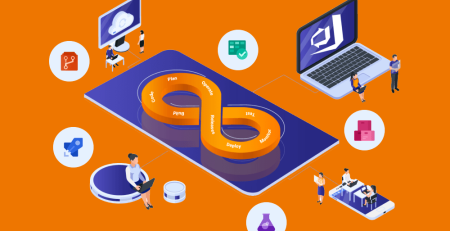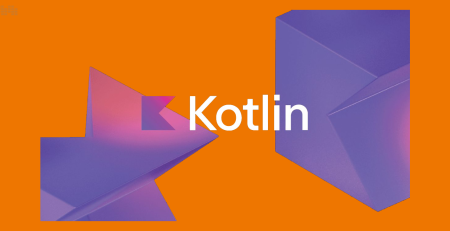How to Motivate Your Developers to Learn New Skills
Table of Contents
Introduction
Good developers and top teams in technology can change quickly. They learn new skills all the time because things are always changing fast. Making programmers learn all their lives helps them grow and makes the whole team stronger. Staying ahead is very important for making new ideas and keeping an edge in the quick change of technology.
In this guide, we explore effective strategies to inspire and motivate your developers to actively pursue and acquire new skills. By fostering a culture of continuous learning, you not only invest in the professional development of your team but also cultivate a dynamic and resilient workforce that can readily respond to the challenges of the ever-evolving tech landscape.
Whether you are a team lead, manager, or part of the leadership, understanding how to encourage and support your developers in their learning journey is crucial. From communication and resource allocation to recognition and collaboration, each aspect plays a vital role in creating an environment where learning becomes an integral part of the development process.
Let’s delve into practical approaches and actionable insights that can help you cultivate a culture of continuous learning within your development team, ensuring they stay motivated, engaged, and equipped with the skills needed for success in a rapidly changing technological world.
1. Communicate the Value
One important way to encourage your programmers to learn new things is by clearly explaining the importance of always improving. When people who make computer programs know how important it is to learn new things, they are more likely excited and serious about learning. Here are key strategies to communicate the value of continuous learning:
- Link Learning to Career Advancement:
Clearly illustrate how learning new skills aligns with career progression. Emphasize that acquiring expertise in emerging technologies or mastering new programming languages can open doors to exciting opportunities, promotions, and increased responsibilities. - Highlight the Impact on Projects:
Showcase real-world examples of how learning new skills has positively impacted past projects. Illustrate how staying updated with the latest technologies contributes to the efficiency, effectiveness, and overall success of the team’s deliverables. - Connect Learning to Problem Solving:
Emphasize that learning new skills enhances problem-solving abilities. When developers grasp the value of acquiring specific skills in addressing challenges or optimizing processes, they are more likely to see learning as a valuable investment in their problem-solving toolkit. - Emphasize Market Relevance:
Demonstrate how staying current with industry trends and technologies enhances the market relevance of both individual developers and the team as a whole. Emphasize the importance of being well-positioned in a competitive job market and how continuous learning contributes to professional marketability. - Showcase Learning Success Stories:
Share success stories of developers who have actively pursued learning and witnessed tangible benefits. These stories can serve as powerful testimonials, inspiring others to follow suit. Consider organizing internal seminars or workshops where successful learners share their experiences. - Underline the Intrinsic Value:
Discuss how learning contributes to personal satisfaction and a sense of accomplishment. Highlight the intrinsic rewards of acquiring new knowledge and skills, such as the joy of overcoming challenges and the intellectual stimulation that comes with learning. - Align Learning with Company Goals:
Clearly articulate how the skills being acquired align with the overall goals and vision of the company. When developers understand that their learning efforts contribute to the success of the organization, they are more likely to feel a sense of purpose and motivation. - Provide Visibility to Leadership Support:
Ensure that leadership visibly supports and encourages continuous learning. When developers see that the leadership values and invests in learning, it reinforces the importance of acquiring new skills as a company-wide initiative rather than an individual pursuit. - Use Data and Metrics:
Present data or metrics that demonstrate the positive correlation between skill acquisition and team performance. Quantifiable evidence can be compelling in illustrating the impact of learning on productivity, code quality, and project outcomes. - Encourage Open Communication:
Foster an environment where developers feel comfortable discussing their career aspirations and the role that learning plays in achieving those goals. Open dialogue allows for a better understanding of individual motivations and helps tailor communication to address specific needs.
By effectively communicating the value of continuous learning, you set the foundation for a motivated and engaged development team eager to embrace new challenges and opportunities.
2. Create a Learning Culture for Developers
Creating a learning culture within your development team is a transformative approach that not only encourages individual skill development but also fosters a collaborative and innovative environment. Here’s how you can cultivate a learning culture:
- Lead by Example:
Demonstrate a commitment to learning by actively engaging in your own continuous development. Share your learning experiences, challenges, and successes with the team to set a positive example. - Encourage Curiosity:
Cultivate an atmosphere that values curiosity and questions. Encourage developers to explore new ideas, technologies, and approaches without fear of failure. A culture that celebrates curiosity promotes a natural inclination toward learning. - Provide Time for Learning:
Allocate dedicated time for learning within work hours. This could include “Learning Fridays” or a set number of hours per week for self-directed learning. Show that the organization values and prioritizes continuous improvement. - Facilitate Knowledge Sharing:
Create platforms for developers to share their knowledge and expertise. This could include regular team meetings, lightning talks, or internal workshops. A culture of knowledge sharing ensures that learning becomes a collective effort. - Establish Mentorship Programs:
Pair experienced developers with those looking to acquire new skills. Mentorship programs provide a structured way for knowledge transfer, guidance, and support. They also foster a sense of community and collaboration. - Promote Collaborative Learning:
Encourage team members to learn together, whether through pair programming, collaborative projects, or study groups. Collective learning experiences not only enhance skill development but also strengthen team bonds. - Provide Learning Resources:
Ensure that developers have easy access to a variety of learning resources, including books, online courses, tutorials, and relevant documentation. Invest in subscriptions to educational platforms or provide access to a well-stocked technical library. - Recognize and Reward Learning:
Acknowledge and reward developers for their commitment to learning. This could be through public recognition, certificates of achievement, or even tangible rewards. Celebrating learning accomplishments reinforces the importance of ongoing development. - Create Learning Challenges:
Introduce friendly competitions or challenges that encourage developers to tackle new problems or explore unfamiliar technologies. This gamified approach adds an element of fun to the learning process and stimulates healthy competition. - Support Continuous Feedback:
Establish a feedback loop that encourages continuous improvement. Regularly assess the effectiveness of learning initiatives and gather input from developers. Adapt the learning culture based on feedback to ensure it aligns with the team’s evolving needs. - Invest in Training Programs:
Sponsor training programs, workshops, and conferences. External training opportunities provide exposure to industry best practices, networking opportunities, and exposure to different perspectives, contributing to a well-rounded learning experience. - Emphasize Lifelong Learning:
Reinforce the idea that learning is a lifelong journey, not a destination. Encourage developers to set long-term learning goals and support them in achieving these objectives throughout their careers.
By embedding these practices into the team’s daily operations and organizational values, you can establish a learning culture that not only motivates developers to acquire new skills but also positions your team as adaptive and forward-thinking in the fast-paced world of technology.
3. Set Clear Expectations
Setting clear expectations for learning and skill development is crucial to ensure alignment between individual goals, team objectives, and organizational priorities. Here’s how you can establish and communicate clear expectations:
- Define Learning Paths:
Work with individual developers to identify their career aspirations and map out learning paths that align with their goals and the needs of the team. Clearly outline the skills and knowledge areas that are essential for their professional growth. - Incorporate Learning Goals in Performance Reviews:
Integrate learning and skill development goals into the performance review process. Discuss these goals regularly, assess progress, and provide constructive feedback. This ensures that learning is an integral part of the overall performance assessment. - Align Learning with Project Requirements:
Connect learning expectations with the skills required for current and upcoming projects. Emphasize the relevance of acquired skills to the team’s success and the impact on project outcomes. This alignment enhances the practical application of new knowledge. - Set Realistic Milestones:
Break down larger learning goals into smaller, achievable milestones. This makes the learning journey more manageable and provides developers with a clear roadmap for skill acquisition. Celebrate accomplishments at each milestone to maintain motivation. - Specify Time Commitments:
Clearly communicate the expected time commitment for learning activities. Define whether learning is intended to be part of regular work hours, whether specific days or hours are allocated, or if it’s a combination of both. Providing clarity on time expectations helps in planning. - Identify Relevant Training Resources:
Recommend specific training resources, courses, and learning platforms that align with the identified learning paths. Providing a curated list of resources helps streamline the learning process and ensures that developers have access to quality materials. - Encourage Regular Check-Ins:
Schedule regular check-ins to discuss progress, challenges, and adjustments to learning plans. These conversations provide an opportunity for mutual feedback, allowing for course corrections and adaptations to changing priorities. - Articulate the Business Case:
Clearly articulate the business case for continuous learning. Help developers understand how their individual development contributes to the overall success and competitiveness of the team and the organization. This reinforces the importance of their learning efforts. - Define Skill Expectations for Advancement:
Outline the specific skills and competencies required for career advancement within the organization. Clearly define the expectations for developers to progress to higher roles, linking skill development with career growth. - Provide Support and Resources:
Ensure that developers have the necessary support and resources to meet their learning expectations. This includes access to training materials, mentorship, and opportunities to apply newly acquired skills in real-world projects. - Acknowledge Individual Learning Styles:
Recognize that individuals may have different learning styles and preferences. Allow flexibility in how developers approach learning, whether through self-paced online courses, hands-on projects, or collaborative learning experiences. - Document Learning Plans:
Formalize learning expectations by documenting individualized learning plans. This document can serve as a reference point for both developers and management, outlining agreed-upon goals, timelines, and milestones.
By setting clear expectations, you provide a roadmap for developers to follow, creating a sense of direction and purpose in their continuous learning journey. This clarity contributes to a more focused and motivated team committed to acquiring the skills necessary for success.
4. Provide Learning Opportunities
Providing diverse and accessible learning opportunities is essential to support the professional growth and development of your developers. Here are strategies to offer meaningful learning opportunities within your organization:
- Allocate Budget for Training:
Dedicate a budget specifically for training and professional development. This financial commitment demonstrates the organization’s investment in the growth of its employees and can be used for courses, workshops, conferences, and relevant subscriptions. - Offer In-House Training Sessions:
Organize in-house training sessions facilitated by internal experts or external trainers. These sessions can cover a range of topics, from technical skills to soft skills, fostering knowledge-sharing and collaboration within the team. - Utilize Online Learning Platforms:
Leverage online learning platforms such as Udemy, Coursera, edX, and Pluralsight. Provide developers with access to a wide array of courses and resources that align with their learning goals. Many platforms offer flexibility in terms of self-paced learning. - Support Conference Attendance:
Encourage and financially support developers to attend industry conferences and events. Conferences provide exposure to the latest trends, networking opportunities, and a chance to learn from experts in the field. - Implement Cross-Training Programs:
Facilitate cross-training programs where team members can learn from each other by rotating roles or responsibilities. This approach not only expands individual skill sets but also strengthens team collaboration. - Encourage Certification Programs:
Support developers in obtaining relevant certifications. Certifications can validate their expertise, enhance their credibility, and contribute to the overall skill level of the team. - Promote Hackathons and Coding Challenges:
Organize internal hackathons or coding challenges. These events provide a hands-on and collaborative learning experience, encouraging creativity and problem-solving while fostering a sense of camaraderie within the team. - Create a Learning Resource Library:
Establish a physical or virtual learning resource library within the organization. Curate a collection of books, tutorials, and other educational materials that developers can borrow or access at any time. - Facilitate Lunch and Learn Sessions:
Host regular “Lunch and Learn” sessions where team members can present or discuss topics of interest. This informal setting encourages knowledge-sharing and creates a space for continuous learning within the team. - Provide Mentorship Opportunities:
Pair less experienced developers with more seasoned mentors. Mentorship programs facilitate knowledge transfer, provide guidance, and create a supportive environment for learning. - Introduce Skill Development Challenges:
Create skill development challenges or competitions within the team. These challenges can be focused on specific technologies or problem-solving scenarios, promoting a friendly and engaging learning environment. - Invest in On-the-Job Learning:
Allow developers to apply their learning directly to projects. Provide opportunities for hands-on experience and experimentation, reinforcing the practical application of newly acquired skills. - Facilitate External Workshops and Training:
Bring in external trainers or experts to conduct workshops or specialized training sessions tailored to the team’s needs. External perspectives can bring fresh insights and approaches to learning. - Establish a Learning Budget for Each Developer:
Allocate a learning budget for each developer, allowing them to choose courses, attend workshops, or purchase relevant materials that align with their individual learning goals.
By implementing a combination of these learning opportunities, you create a dynamic and supportive environment that empowers developers to continuously enhance their skills and stay abreast of industry advancements. This investment in learning contributes to the overall success and resilience of your development team.
5. Encourage Self-Directed Learning
Encouraging self-directed learning empowers developers to take ownership of their professional development and pursue knowledge based on their interests and career goals. Here are strategies to foster self-directed learning within your development team:
- Establish Learning Goals:
Collaborate with each developer to set personalized learning goals. These goals should align with their career aspirations, the team’s objectives, and the organization’s needs. Clearly articulate the importance of self-directed learning in achieving these goals. - Promote Autonomy:
Create an environment that values autonomy and independence. Allow developers the flexibility to choose the topics, technologies, and learning methods that resonate with them. This fosters a sense of ownership and responsibility for their own learning journey. - Provide Learning Resources:
Ensure easy access to a variety of learning resources. Offer recommendations for books, online courses, tutorials, and relevant documentation. Establish a central repository or portal where developers can discover and share useful resources. - Support Learning Platforms:
Encourage the use of online learning platforms that offer a wide range of courses. Provide subscriptions or access to platforms such as Udemy, Coursera, LinkedIn Learning, or Pluralsight. These platforms empower developers to explore diverse topics at their own pace. - Offer Time for Exploration:
Allocate dedicated time for self-directed learning during work hours. Designate specific days or hours when developers can focus on exploring new technologies, tools, or concepts without the pressure of immediate project deadlines. - Foster a Learning Community:
Create a supportive community where developers can share their self-directed learning journeys. Establish channels for knowledge-sharing within the team, such as discussion forums, internal blogs, or collaborative projects. - Encourage Experimentation:
Emphasize the value of hands-on experimentation. Allow developers to apply what they’ve learned in practical scenarios, whether through personal projects, prototypes, or contributions to open-source initiatives. Encourage a mindset of continuous experimentation and learning from experiences. - Recognize Informal Learning:
Acknowledge that learning happens in various ways, including through informal channels. Recognize the value of attending meetups, participating in online forums, or engaging in discussions on social media platforms. Informal learning can complement structured learning activities. - Implement a Learning Day or Sprint:
Dedicate specific days or sprints solely to self-directed learning. During this time, developers can choose to delve into topics of interest, collaborate with peers, or work on individual projects. This periodic focus encourages a balance between project work and learning. - Provide Mentorship for Guidance:
Pair developers with mentors who can offer guidance and support in their self-directed learning journeys. Mentors can share insights, recommend resources, and provide valuable feedback, enhancing the effectiveness of self-directed learning. - Celebrate Learning Achievements:
Recognize and celebrate milestones and achievements in self-directed learning. This acknowledgment can be through team-wide announcements, informal gatherings, or a dedicated space where developers can showcase their accomplishments. - Create a Learning Culture Norm:
Establish self-directed learning as a norm within the team and organization. Communicate the expectation that developers actively seek opportunities for self-improvement and share their discoveries with the team.
By fostering an environment that encourages self-directed learning, you enable developers to stay motivated, curious, and engaged in their continuous development. This approach not only enhances individual skills but also contributes to the overall knowledge base and innovation within your development team.
6. Encourage Certification Programs
Encouraging certification programs among your development team can be a strategic approach to validate and enhance their skills. Certifications provide a standardized way to assess and recognize expertise in specific technologies or frameworks. Here’s how you can promote and support certification programs:
- Highlight the Benefits:
Clearly communicate the benefits of certifications to your developers. Explain how certifications can enhance their professional credibility, open doors to new opportunities, and contribute to their overall career advancement. - Align Certifications with Team Goals:
Connect certification programs with the team’s objectives and the organization’s technology stack. Emphasize the relevance of specific certifications to current and future projects, ensuring that the acquired skills align with the team’s needs. - Provide Financial Support:
Offer financial support for certification exams, training materials, and related expenses. This could include covering exam fees, providing access to study resources, or reimbursing the cost of certification courses. Financial support demonstrates the organization’s commitment to the development of its team members. - Incorporate Certification Goals in Development Plans:
Include certification goals in individual development plans during performance reviews. Discuss the certifications that align with each developer’s role and career aspirations. This integration ensures that certification efforts are recognized and supported within the formal evaluation process. - Offer Study Time During Work Hours:
Allocate dedicated time during work hours for exam preparation and study. This recognizes the time and effort required for certification pursuits and underscores the organization’s commitment to supporting professional development. - Establish a Certification Path:
Create a structured certification path that guides developers through progressive levels of expertise. This can include foundational certifications, intermediate levels, and advanced certifications. Clearly outline the steps and recommended order for pursuing certifications. - Recognize and Reward Achievements:
Acknowledge and celebrate the attainment of certifications. Implement a recognition program that publicly applauds developers for their efforts and accomplishments. This recognition can be shared within the team, department, or company-wide. - Facilitate Group Certification Efforts:
Encourage group certification efforts for common technologies or frameworks used within the team. Group study sessions, discussions, and collaborative learning activities can create a supportive environment and make the certification process more engaging. - Monitor Certification Trends:
Stay informed about industry trends and emerging certifications relevant to your field. Encourage developers to explore certifications that align with the team’s evolving technology stack and strategic goals. - Provide Access to Study Materials:
Ensure that developers have access to a variety of study materials, including official documentation, online courses, practice exams, and study guides. Make these resources readily available to support effective exam preparation. - Facilitate Mentorship for Certification:
Pair developers pursuing certifications with mentors who have already achieved those certifications. Mentors can provide guidance, share their experiences, and offer valuable insights into the certification process. - Promote Continuous Learning Beyond Certification:
Emphasize that certification is just one aspect of continuous learning. Encourage developers to view certifications as milestones in their ongoing professional development journey and to seek additional learning opportunities beyond the certification requirements.
By actively promoting and supporting certification programs, you not only enhance the skills of your development team but also contribute to the overall competency and competitiveness of your organization. Certification achievements can serve as tangible markers of expertise and commitment to excellence within the team and the broader professional community.
7. Create Mentorship Programs
Establishing mentorship programs within your development team can be a powerful strategy to foster learning, collaboration, and professional growth. Here’s a guide to creating effective mentorship programs:
- Define Program Objectives:
Clearly outline the objectives of the mentorship program. Identify specific goals such as skill development, career guidance, and knowledge transfer. Align these objectives with both individual and team needs. - Communicate Program Benefits:
Clearly communicate the benefits of participating in the mentorship program to both mentors and mentees. Emphasize how mentorship can contribute to personal and professional growth, skill enhancement, and a stronger sense of community within the team. - Identify Mentoring Models:
Choose a mentoring model that suits the needs of your team. Models can include one-on-one mentoring, group mentoring, or a combination of both. Tailor the model to accommodate the preferences and availability of participants. - Solicit Volunteer Mentors:
Encourage experienced and willing team members to volunteer as mentors. Ensure that mentors have the necessary expertise and a genuine interest in supporting the professional development of their mentees. - Match Mentors and Mentees:
Thoughtfully match mentors and mentees based on their goals, skills, and personalities. Consider factors such as technical expertise, career aspirations, and communication styles to create compatible pairings. - Establish Clear Expectations:
Define the expectations and responsibilities for both mentors and mentees. This includes the frequency and format of meetings, the duration of the mentorship, and the specific areas of focus. Setting clear expectations ensures a structured and effective program. - Provide Training for Mentors:
Offer training sessions or workshops for mentors to equip them with effective mentoring skills. Topics may include active listening, goal setting, constructive feedback, and creating a positive mentorship environment. - Facilitate Regular Check-Ins:
Encourage regular check-ins between mentors and mentees. These meetings provide opportunities for mentees to discuss their goals, seek guidance, and receive feedback. Regular communication fosters a supportive and trusting mentorship relationship. - Promote Two-Way Learning:
Emphasize that mentorship is a two-way learning process. Mentors can benefit from fresh perspectives and insights from their mentees, creating a mutually beneficial relationship. Encourage mentees to actively engage in the mentorship and contribute to the learning dynamic. - Offer Flexibility in Format:
Allow flexibility in the format of mentorship interactions. While one-on-one meetings may be suitable for some pairs, others might benefit from group sessions, workshops, or collaborative projects. Adapt the format to accommodate diverse learning preferences. - Create a Mentorship Resources Hub:
Establish a centralized hub or resource repository that mentors and mentees can access. Include guides, templates, and resources to facilitate effective communication, goal setting, and progress tracking. - Celebrate Mentorship Success Stories:
Showcase success stories from the mentorship program to highlight the positive impact on both mentors and mentees. Recognizing and celebrating achievements reinforces the value of the mentorship initiative within the team. - Evaluate and Iterate:
Regularly evaluate the effectiveness of the mentorship program. Gather feedback from participants to identify areas for improvement and make necessary adjustments to enhance the overall experience. - Extend Opportunities for Reverse Mentorship:
Encourage mentees to share their unique skills or perspectives with their mentors. Reverse mentorship can be a valuable way for mentors to gain insights into emerging technologies or new approaches.
By implementing a mentorship program with careful planning and ongoing support, you create a culture of collaboration and learning within your development team. Effective mentorship can contribute significantly to the professional development and job satisfaction of team members, ultimately enhancing the overall success of the team.
8. Gamify Learning
Gamifying learning is an effective way to make the process more engaging, enjoyable, and motivating for developers. Here are strategies to gamify learning within your development team:
- Create Learning Challenges:
Develop challenges or quests that align with specific learning objectives. These challenges can involve solving problems, completing coding exercises, or achieving specific milestones. Award points or badges for successful completion. - Implement a Point System:
Introduce a point system where developers earn points for completing courses, acquiring new skills, or participating in learning activities. Establish leaderboards to foster friendly competition and recognition for top performers. - Offer Badges and Certificates:
Design and award badges or certificates for reaching certain learning milestones. These visual rewards serve as tangible symbols of achievement and can be displayed on profiles or in team communications. - Organize Coding Tournaments:
Host coding tournaments or hackathons that challenge developers to apply their newly acquired skills in a competitive setting. This not only gamifies learning but also promotes collaboration and creativity. - Introduce a Virtual Currency:
Create a virtual currency within the learning platform. Developers can earn this currency by completing courses, participating in challenges, or sharing knowledge. They can then use the currency to “purchase” additional learning resources or exclusive opportunities. - Build a Learning Adventure:
Craft a learning adventure or storyline where developers progress through levels by mastering different skills. Each level can represent a new set of challenges or learning objectives. Make the journey visually appealing and interactive. - Incorporate Quizzes and Trivia:
Integrate quizzes and trivia games into the learning experience. Use platforms that allow developers to test their knowledge in a fun and interactive way. Offer rewards for high scores or correct answers. - Set up a Learning Board Game:
Develop a board game that developers can play to reinforce learning concepts. Include challenges, rewards, and setbacks on the game board. This physical or virtual board game can be an engaging way to review and apply knowledge. - Provide Real-Time Feedback:
Offer immediate feedback on learning achievements. Positive reinforcement in the form of instant feedback, such as visual cues, messages, or sounds, can enhance the gaming experience and encourage continuous participation. - Host Virtual Escape Rooms:
Create virtual escape rooms with coding or problem-solving challenges. Developers work collaboratively to “escape” by applying their skills and knowledge. This team-oriented gamification approach promotes communication and teamwork. - Reward Collaborative Achievements:
Acknowledge and reward collaborative learning achievements. If developers work together to achieve a certain goal or complete a project, recognize the entire team with collective rewards, reinforcing the importance of teamwork. - Integrate Social Sharing Features:
Incorporate social sharing features within the learning platform. Developers can share their progress, achievements, or completed challenges on internal communication channels. This fosters a sense of community and healthy competition. - Host Virtual Scavenger Hunts:
Organize virtual scavenger hunts related to learning objectives. Developers can explore different resources, solve clues, and gather information to complete the scavenger hunt. This activity adds an element of exploration and discovery. - Provide Prizes and Incentives:
Offer tangible incentives or prizes for top performers. This could include gift cards, additional time off, or opportunities to lead a project. Recognizing and rewarding outstanding efforts enhances motivation. - Collective Goal Setting:
Encourage developers to collectively set learning goals as a team. When the team achieves a set milestone, celebrate the accomplishment with a shared reward or recognition.
Remember to tailor the gamification strategies to the preferences and culture of your development team. A well-designed gamification approach can make learning more enjoyable, boost engagement, and contribute to a positive and collaborative learning environment.
9. Provide Time and Resources
Providing dedicated time and resources for learning is crucial to support the professional development of your developers. Here are strategies to ensure your team has the time and resources they need for continuous learning:
- Allocate Dedicated Learning Time:
Set aside specific time during regular work hours for learning activities. This could be a designated day each month, a few hours per week, or a flexible schedule that allows developers to balance learning with their project responsibilities. - Implement a Learning Budget:
Allocate a budget specifically for learning and development expenses. This budget can cover expenses such as training courses, workshops, certifications, conference attendance, and relevant learning materials. Ensure that developers have access to these funds for their individual learning needs. - Provide Paid Learning Days:
Offer paid learning days where developers can focus exclusively on self-directed learning, skill development, or pursuing certifications. This acknowledges the importance of continuous learning and provides a dedicated period for focused improvement. - Support Online Learning Platforms:
Invest in subscriptions to online learning platforms such as Udemy, Coursera, Pluralsight, or LinkedIn Learning. Providing access to a variety of courses allows developers to choose topics that align with their individual learning goals and the team’s needs. - Create a Learning Resource Library:
Establish a physical or virtual learning resource library within the organization. Stock it with relevant books, journals, and other educational materials that developers can borrow or access. This resource library can serve as a centralized repository for learning materials. - Offer Flexibility in Work Hours:
Provide flexibility in work hours to accommodate learning activities. This could include flexible start and end times, compressed workweeks, or the option for developers to schedule focused learning blocks during their most productive times. - Encourage Conferences and Workshops Attendance:
Encourage attendance at relevant conferences, workshops, and industry events. Provide financial support for registration fees, travel, and accommodation. Participation in these events exposes developers to the latest industry trends and fosters networking opportunities. - Support Study Groups and Peer Learning:
Facilitate study groups or peer learning sessions within the team. Encourage collaboration where developers can collectively explore new technologies, share knowledge, and work on group projects. This fosters a culture of collaborative learning. - Implement a Reimbursement Program:
Set up a reimbursement program for learning-related expenses. Developers can submit receipts for approved learning materials, courses, or certifications, and the organization reimburses them within established guidelines. - Provide Access to Training Platforms:
Invest in comprehensive training platforms that offer a variety of courses and resources. Platforms like Skillsoft, Treehouse, or Codecademy can provide developers with a broad range of learning opportunities to enhance their skills. - Promote Internal Training Sessions:
Organize internal training sessions led by subject matter experts within the team or organization. These sessions can cover specific tools, frameworks, or best practices, providing targeted and relevant learning experiences. - Encourage Cross-Functional Learning:
Support developers in exploring skills beyond their immediate domain. Encouraging cross-functional learning can lead to a more versatile and adaptable team. Provide opportunities for developers to gain exposure to different areas of expertise within the organization. - Monitor Workload and Adjust Expectations:
Regularly assess the workload of developers and adjust project expectations to allow for dedicated learning time. Striking a balance between project commitments and learning initiatives is essential for sustainable growth. - Promote a Learning Culture:
Foster a culture that values continuous learning. Communicate the importance of learning and skill development at all levels of the organization. When learning is ingrained in the organizational culture, it becomes a shared priority.
By implementing these strategies, you demonstrate a commitment to the professional development of your developers, creating an environment where learning is not just encouraged but actively supported with the necessary time and resources.
10. Stay Current with Technology Trends
Staying current with technology trends is crucial for developers and technology professionals to remain competitive and contribute effectively to their teams. Here are strategies to help developers stay up-to-date with the latest technology trends:
- Subscribe to Industry Newsletters:
Encourage developers to subscribe to newsletters from reputable tech publications, blogs, and industry websites. Newsletters provide curated updates on the latest trends, technologies, and best practices. - Follow Influential Blogs and Websites:
Identify influential blogs and websites in the technology space and recommend them to your team. Regularly following these sources can provide valuable insights into emerging technologies, industry news, and expert opinions. - Utilize Social Media Platforms:
Follow relevant accounts and hashtags on platforms like Twitter and LinkedIn. Engaging with the tech community on social media can expose developers to real-time discussions, news, and announcements. - Attend Conferences and Meetups:
Encourage participation in conferences, meetups, and industry events. These gatherings offer opportunities to learn from experts, network with peers, and gain firsthand knowledge of emerging trends. - Join Online Tech Communities:
Join online forums, discussion groups, and community platforms related to specific technologies or programming languages. Participating in these communities allows developers to ask questions, share experiences, and stay informed about the latest developments. - Enroll in Online Courses and Webinars:
Recommend enrollment in online courses and webinars. Platforms like Coursera, edX, and Udacity offer courses on a wide range of topics, allowing developers to acquire new skills and stay current with the latest advancements. - Explore Podcasts and Webcasts:
Suggest podcasts and webcasts that cover technology trends and discussions. Listening to industry experts and thought leaders can provide valuable insights and perspectives while developers multitask. - Read Technology Books:
Encourage reading technology-related books to gain in-depth knowledge. Books often delve into specific technologies, frameworks, or methodologies, offering a comprehensive understanding of the subject matter. - Participate in Hackathons and Coding Challenges:
Engage in hackathons, coding challenges, or online coding platforms. These activities not only provide hands-on experience but also expose developers to new technologies and problem-solving approaches. - Take Advantage of Online Learning Platforms:
Leverage online learning platforms like Pluralsight, Codecademy, and LinkedIn Learning. These platforms offer a variety of courses on programming languages, frameworks, and emerging technologies. - Network with Industry Professionals:
Encourage developers to attend networking events or webinars where they can connect with industry professionals. Networking provides opportunities to learn from experienced individuals and stay informed about industry trends. - Set Up Tech Talks and Knowledge Sharing Sessions:
Organize regular tech talks or knowledge-sharing sessions within your team. These sessions can be led by team members or external experts, covering topics related to the latest trends and technologies. - Establish a Learning Budget:
Allocate a budget for professional development and learning. This budget can be used by developers to attend conferences, enroll in courses, or purchase books that align with their learning goals. - Encourage Continuous Experimentation:
Foster a culture of continuous experimentation within your team. Encourage developers to explore new technologies, frameworks, or tools through side projects or innovation time. - Stay Aware of Job Market Trends:
Keep an eye on job market trends and requirements. Understanding the skills in demand can guide developers in prioritizing their learning efforts toward areas that enhance their marketability.
By incorporating these strategies, developers can proactively stay informed about technology trends, continuously enhance their skills, and contribute effectively to the success of their teams and organizations.
11. Encourage Collaboration
Encouraging collaboration within your development team is essential for fostering a dynamic and innovative work environment. Here are strategies to promote and enhance collaboration:
- Open Communication Channels:
Establish open communication channels within the team. Use messaging platforms, collaboration tools, and regular team meetings to facilitate transparent and effective communication. - Create a Collaborative Workspace:
Design physical and virtual workspaces that encourage collaboration. Arrange workstations to facilitate easy communication, and use collaboration tools like Slack, Microsoft Teams, or Asana to support remote collaboration. - Implement Pair Programming:
Introduce pair programming, where two developers work together on the same code. This collaborative approach not only enhances code quality but also promotes knowledge sharing and problem-solving. - Encourage Code Reviews:
Foster a culture of code reviews where team members collaboratively review each other’s code. Code reviews not only improve code quality but also provide opportunities for learning and knowledge exchange. - Establish Cross-Functional Teams:
Organize cross-functional teams that bring together individuals with diverse skills and expertise. Cross-functional teams encourage collaboration and enable the sharing of different perspectives. - Hold Regular Team Meetings:
Conduct regular team meetings to discuss ongoing projects, share updates, and address challenges. These meetings provide a platform for open communication and collaboration among team members. - Encourage Knowledge Sharing:
Promote knowledge-sharing sessions within the team. This can include lightning talks, tech talks, or brown bag sessions where team members share insights, best practices, and lessons learned. - Implement Agile Methodologies:
Embrace agile methodologies such as Scrum or Kanban. These frameworks emphasize collaboration, adaptive planning, and continuous improvement, fostering a collaborative and iterative development process. - Use Collaboration Tools:
Leverage collaboration tools for project management, version control, and document sharing. Tools like Git, Jira, Confluence, and Google Workspace facilitate seamless collaboration and information sharing. - Encourage Cross-Team Collaboration:
Facilitate collaboration not only within the development team but also across different teams within the organization. Cross-team collaboration enhances communication and alignment on broader organizational goals. - Establish a Mentorship Program:
Implement a mentorship program where experienced team members mentor less experienced ones. Mentorship encourages knowledge transfer and creates a supportive learning environment. - Promote Inclusivity:
Create an inclusive culture that values input from all team members, regardless of their experience level or background. Foster an environment where everyone feels comfortable sharing ideas and contributing to discussions. - Celebrate Team Achievements:
Recognize and celebrate team achievements. Acknowledging the collective efforts of the team fosters a sense of camaraderie and motivates team members to collaborate towards common goals. - Use Collaborative Development Tools:
Utilize collaborative development tools that allow multiple team members to work on the same codebase simultaneously. Tools like Visual Studio Code Live Share or Git-based collaboration platforms enhance real-time collaboration. - Encourage Cross-Training:
Encourage team members to cross-train on different technologies and areas of expertise. Cross-training promotes collaboration by ensuring that team members have a broader understanding of the entire development process. - Facilitate Team-building Activities:
Organize team-building activities both within and outside of the workplace. Team-building activities help build strong relationships, trust, and a sense of collaboration among team members. - Support Remote Collaboration:
If your team works remotely, implement practices and tools that support remote collaboration. Conduct virtual meetings, use collaborative document editing tools, and maintain open communication channels to bridge geographical gaps. - Seek Feedback Regularly:
Encourage a culture of feedback within the team. Regularly seek feedback on collaboration processes, communication, and team dynamics. This helps identify areas for improvement and ensures continuous enhancement of collaboration practices.
By implementing these strategies, you create an environment that values collaboration, encourages open communication, and empowers your development team to work cohesively towards shared goals.













Leave a Reply